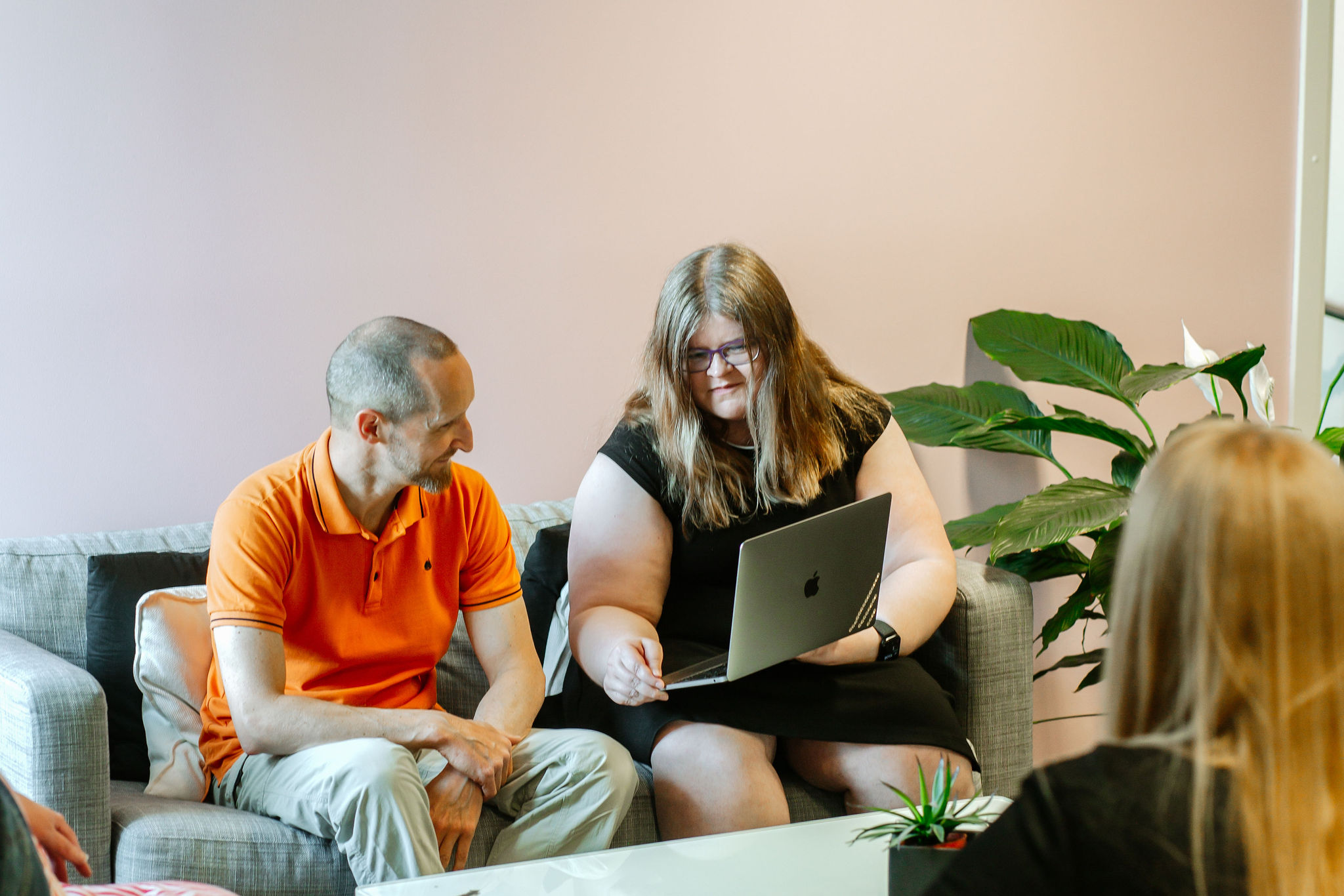Why does every business benefit from accessibility?
Our accessibility expert, Sanna Kramsi, still sometimes encounter the question of why a company should invest in accessibility if the target customers do not need accessibility. This is unlikely to be said by someone who knows what accessibility is, who it affects and why.
Accessibility is not just a matter for a small minority
Accessibility is still too often seen as a matter for a small group of marginalised people, and there is a lack of understanding of how to improve our mindset. Many people know that blind people need web accessibility. Similarly, for wheelchair users, accessibility in the physical world is crucial. For many, accessibility needs represent needs that are visible on the surface. However, this is only a small proportion of the people who need it. In addition, a significant proportion of people benefit from accessibility.
There are many types of challenges
Accessibility is primarily aimed at people with disabilities. The number of different types of disabilities depends on how they are classified. But here are a few examples of common classifications:
-
Cognitive or learning disabilities such as ADHD, autism spectrum disorder or dyslexia
-
Seizure disabilities such as epilepsy
-
Auditory disabilities such as partial or total deafness or tinnitus
-
Mobility, flexibility and physical disabilities such as amputation or spinal cord injury
-
Visual disabilities such as colour blindness, low vision or blindness
-
Psychological and psychiatric disabilities such as depression, anxiety or bipolar disorder
-
Speech disabilities such as aphasia and dysparaxia
These are just a few examples of the different types of disabilities. As can be noticed, there are many very different human characteristics associated with web accessibility and physical world accessibility. And of course, one person can have more than one disability.
We don’t know the accessibility needs of others
The need for accessibility may not be visible on the surface. The fact is that we can never know what someone else needs. And we don’t even need to know. It is enough that we do our part to make accessibility a reality.
Everyone needs accessibility sometimes. For some, the need may be temporary, while for others it is permanent. It is also good to remember that each individual has their own accessibility needs. One person may get migraines or nausea from certain colour combinations, while another may view the same combinations without difficulty.
If there is not a single person in your circle of acquaintances who openly expresses a need for accessibility, it is unfortunately easy to be left with the impression that accessibility only affects a few distant people somewhere far away. It is therefore good for everyone to remember that many disabilities are still stigmatised in our society. They are not necessarily disclosed except to those closest to people. And that is why it is particularly important to ensure accessibility of services without anyone having to ask for it.
New views into accessibility
There is a clear need for greater understanding of accessibility in our society. Much work is already being done, but much remains to be done. I am not at all surprised that there is a lack of knowledge, as many of the issues that need to be addressed in the field of accessibility are not obvious.
For example, Sanna had not previously made the connection that wider corridors in buildings help the hearing impaired, because wider corridors make it easier to speak sign language. In retrospect, this is even logical, but it is not odd that it was never thought of it. And this perhaps sums up part of the problem. There are a lot of great features in the world for improving accessibility, but very often no one tells us about them clearly.
Enlarging text in a browser or operating system is seen as a basic feature of usability, which it certainly is. But it is also an accessibility feature that helps people with low vision, for example.
Accessibility is sometimes seen as a big and scary bogeyman. And yes, accessibility is quite a big chunk to swallow if you try to swallow it all at once. There’s WCAG, the Digital Services Act, the Web Accessibility Directive and the European Accessibility Act and on top of that the EN 301 549 standard. Even less is enough to make your head spin. But at the heart of it all is the human being, whose autonomy we want to enable on the internet. If we start from this point of view, it will be much easier to understand accessibility and to start increasing our understanding of it.
Ignoring accessibility can be damaging
Let’s forget for a moment the requirements of the law and the consequences of non-compliance. Let’s just focus on the impact of accessibility and its absence.
Failure to ensure the accessibility of the service may exclude potential users or customers. This can have an impact on sales, and many businesses also seek a good customer experience.
For many people who need accessibility, lack of accessibility means inaction. To make this easier to identify with, everyone can probably recall a personal experience of failure on a website. Perhaps a purchase was not made because using the shopping cart didn’t work as expected, there may have been a JavaScript error on the page that you can’t even see. Perhaps you haven’t even been able to reach the shopping cart because of a technical problem. A page may not have loaded at all or partially. Although such error situations are usually rare, for a person with accessibility needs, such situations are more the rule than the exception.
Let us also return to the idea, mentioned at the beginning, that the target group does not need accessibility. What if someone who is not part of this actual target group wanted to buy this product or service for someone else? So even if your product or service is one that, for example, a blind person could not use for some reason, why would you want to deny that person the opportunity to buy it for someone else?
Now is a good time to forget outdated ideas about accessibility. Accessibility legislation is constantly expanding, and by the end of June 2025, the private sector will also have to take better care of accessibility.
Need help with accessibility? Contact us!
Thoughts by




